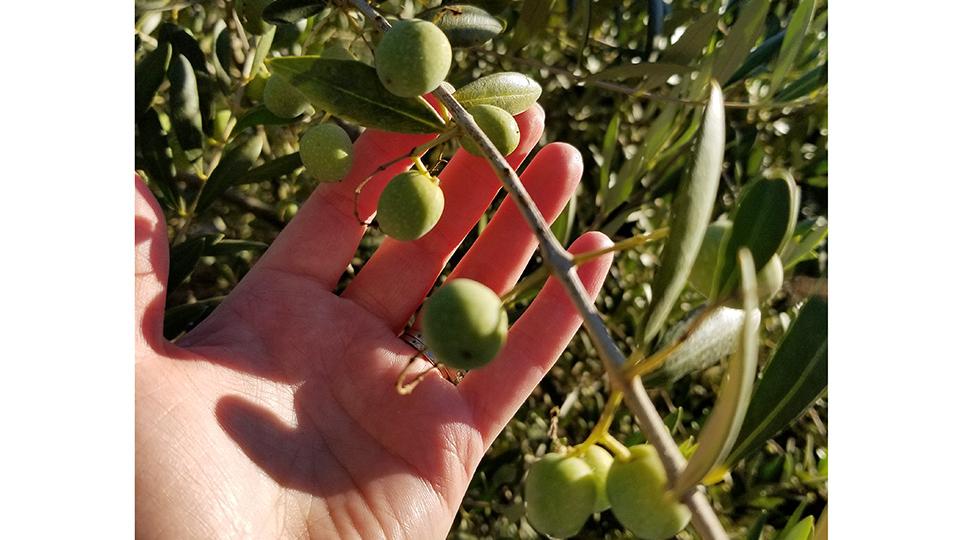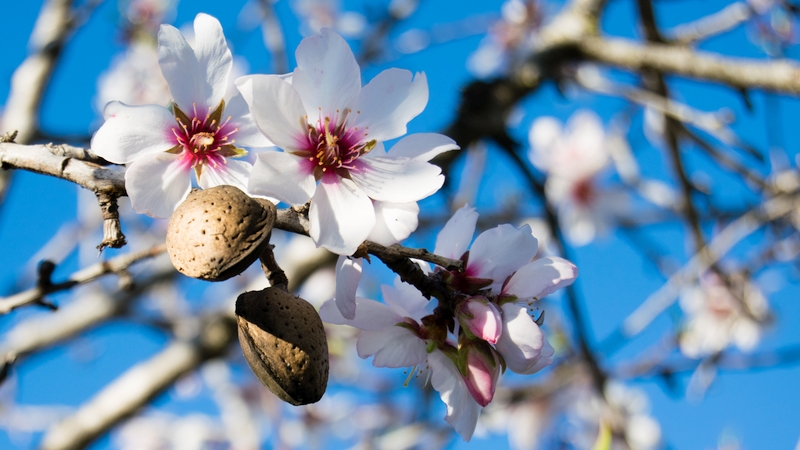Oregon Growers Defying the Odds With Olives

Because of a lack of heat, olives grown in Oregon often fail to ripen and turn dark as quickly as those grown in states farther south.
Photo by Heather Stoven, Oregon State University
Established to embrace all things Italian, the Dante Alighieri Society of Washington has many times discussed wine imported from Italy. At this particular meeting, the group’s President, Dan DeMatteis, wants to please his members’ mental palates with something unique. “Everybody knows a lot about grape vines that came from Italy to California, Washington, and Oregon,” DeMatteis says. “What about the olives? We don’t hear any stories about olives.”
This story is all about olives — courtesy of the Dante Alighieri Society, as told by Heather Stoven, an Extension Horticulturist with Oregon State University (OSU). Station-ed in Yamhill County, in the heart of the state’s wine region, Stoven has researched olive growing in Oregon since 2017.
For starters, she wants everyone to know olives are being grown in the Pacific Northwest (PNW). Although the region is “colder than the olives would probably like,” she says, more than two dozen farms in Oregon are defying the odds on a commercial basis. To further the point, she notes that a Canadian grower is doing likewise all the way up in Salt Spring Island, British Columbia.
“That is the farthest north olive orchard I know of,” Stoven says. “There must be some sort of microclimate there that’s beneficial for growing olives.”
Olives thrive between latitudes of 30° and 45° in both hemispheres. California, which accounts for 95% of U.S. olive production (but still less than 1% of the world’s production), lies in the middle of that zone.
Meanwhile, the 45th parallel north runs right through Oregon. And while the ideal USDA plant hardiness zones for growing most olives are 9 through 11, only a sliver of Oregon, along the Pacific Coast, extends up to 9a and 9b, zones that boast a minimum average temperature of 20°F. Temperatures just below 20°F can kill small branches on olive trees; falling between 12°F and 15°F can result in severe damage or tree death.
So, why do olive growers choose to proceed in an 8b hardiness zone (15°F to 20°F) that, Stoven says, is “probably a little risky?” On the positive side, established Oregon farmers with mature orchards are producing award-winning olive oils. Growing conditions in the PNW thrive due to diminished pest pressure. And because olive trees are drought-tolerant, they are increasingly attractive to individuals concerned with climate change.
“After having events like the [2021] heat dome, and getting to be 114°F here, people want to know what we can grow in our changing climate,” Stoven says. “A lot of the farmers do irrigate here, but it’s not going to be as much as you would irrigate other types of crops.”
Also on the plus side, Oregon provides olives with something that the southern areas of warmer states, such as California, Arizona, and Florida, cannot — minimum chilling hours.
“It’s kind of a fine balance: You need some chilling for fruit production, but you don’t want it so cold that you have damage to the trees,” Stoven says.

Olive orchards in Oregon tend to be smaller and newer than those found in California. Trees are typically planted on slopes.
Photo Heather Stoven, Oregon State University
Research Efforts
Stoven joined the OSU Olea Project in 2017 to better serve existing and new olive growers. The group’s research focuses on propagation in Oregon’s climate, up-potting and overwintering for rapid orchard establishment, and cultivar evaluation for cold hardiness. Results of a 2020 survey of 13 Oregon growers, mostly in North Willamette Valley, indicate:
• Many of their orchards are grown on slopes. South-facing slopes enjoy extra heat.
• Most of the growers have less than 5 acres of olives. They have traditionally sourced plants from California nurseries. Among 41 cultivars across the farms, the most popular are ‘Arbequina’, ‘Leccino’, ‘Frantoio’, and ‘Pendolino’ (all Italian cultivars). “A lot of people are trying to figure out what is the best cultivar to grow in our cooler climate,” Stoven says. “They’re kind of throwing everything at the wall.”
• The biggest issues are winter cold injury (22%), fruit set and pest management (both 19%), and harvest, economics and management, and water management (each 9%). On the plus side, spring frost damage is minimal in Oregon because olives do not bloom until mid-June, past the date of the last freeze.
First-Hand Research
The Olea Project has been conducting its own cold-hardiness trial — a randomized, replicated planting of 118 cultivars — that evaluates growth, flowering, yield/fruit characteristics, and cold hardiness.
On Jan. 1, 2022, the trial site in Aurora, OR, experienced a low of 21°F. The cultivars that had the most cold damage in the form of tip burn on branches were: ‘Cucca’, ‘Farga’, ‘Hamid’, ‘Oblonga’, ‘Piconia’, ‘Souri’, ‘San Francesco’, ‘Sevillano’, ‘Taggiasca’, ‘Touffahi de Egypt’, ‘Touffahi de Syria’, and ‘UC 49-14’.
Olives are wind-pollinated; different pollenizers in the field are necessary. The trial’s top cultivars in terms of flowering, as assessed June 29, 2022, were: ‘Arbosana’, ‘Black Italian’, ‘Cayon’, ‘Chemlali’, ‘Chemlali de Stax’, ‘Cordovil’, ‘Farga’, ‘Koroneiki’, ‘Liguria de Catamarca’, ‘Megaron’, ‘Mixan’, ‘Nabali’, ‘Redding-Picholine’, ‘Star of Crimea’, and ‘Thromboulea’.
In terms of fruit set, as assessed Aug. 23, 2022, the best cultivars were: ‘Arbequina’, ‘Arbosana’, ‘Balady’, ‘Black Pearl’, ‘Chemlali’, ‘Chemlali de Stax’, ‘Cordovil’, ‘Koroneiki’, and ‘Mixan’.
Olives are hand-harvested in Oregon, typically at the end of October or early November, before the first hard freeze, which ruins the fruit. There are not enough trees in the PNW to use mechanical harvesting as growers do in California. In addition, because the olives do not get as ripe in the region, they tend to not pull off the tree very easily.
“It takes some work as you’re harvesting these trees to pull those olives off and harvest them,” Stoven says. “What some of the growers here will do, because a lot of people have 5 acres or less, is they tend to have a potluck. They’ll have some bottles of wine and some really good food, and they invite their friends to come and pick olives while keeping their fingers crossed that they don’t have some terrible rainy weather.”










